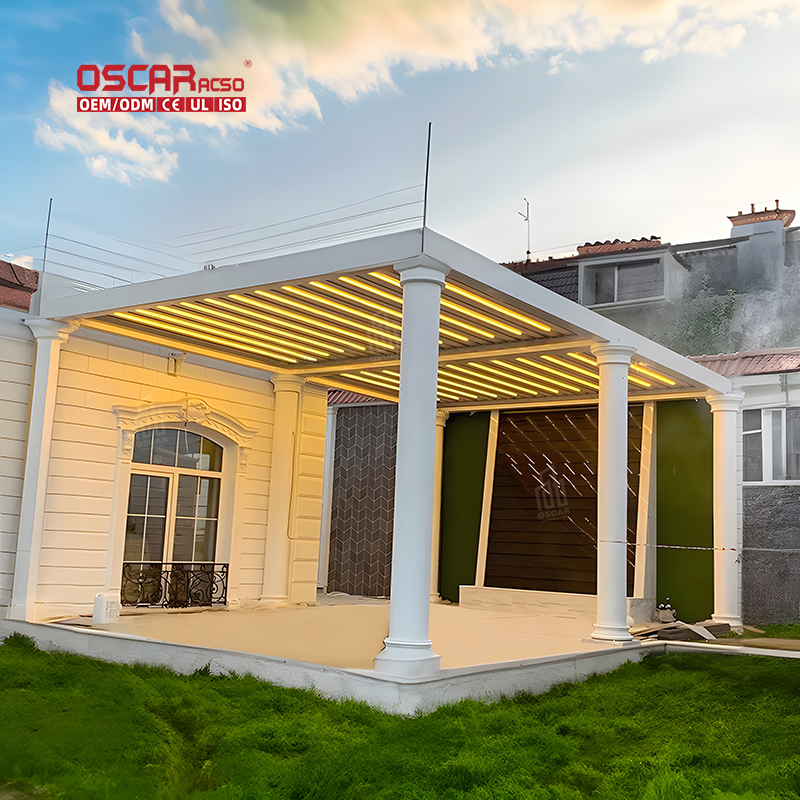Pergola\’s Linguistic Journey, From Ancient Vines to Modern Designs
Ever wondered where the word “pergola” comes from? 🤔 It’s not just a gardening term; it’s a word that has traveled t...
Ever wondered where the word “pergola” comes from? 🤔 It’s not just a gardening term; it’s a word that has traveled through centuries and continents, evolving in meaning and design. Let’s unravel its fascinating story.

🏛️ The Ancient Roots: Latin & Italian Origins
The term “pergola” finds its origins in the Latin word “pergula”, which referred to a projecting roof, a shed, a school, a lecture room, or even a vine arbor. This Latin term itself might have come from the verb “pergere”, meaning “to come forward” or “to project”.
The word was adopted into Italian as “pergola” as early as around 1645. From there, it began its spread across Europe and eventually the world, carried by the popularity of the garden structure it describes.
🌍 Pergola in Global Languages
The word “pergola” has been embraced by many languages, often with similar spelling and meaning, reflecting its shared cultural heritage.

- •
Spanish: Pérgola – Meaning a latticework structure for climbing plants, a shaded walkway, or a sitting area supported by posts.
- •
French: Pergola – Translates to green corridor, arbor, or trellis.
- •
Portuguese: While the search results didn’t directly provide the Portuguese translation for “pergola”, they extensively covered the word “pérola” (pearl), demonstrating how language-specific articles can focus on different vocabulary.
- •
English: Pergola – Entered the English language in the 1670s, directly from Italian, retaining its meaning as a garden feature with a latticework roof.
This linguistic consistency highlights the shared appreciation for this architectural element across cultures.
🏗️ More Than Just a Word: What is a Pergola?
So, what exactly are we talking about when we say “pergola”? It’s an outdoor structure consisting of vertical posts or pillars that support cross-beams and an open lattice roof. Unlike a solid-roofed gazebo or a fully shaded arbor, a pergola is designed to offer partial shade and support for climbing plants like vines, creating a beautiful blend of architecture and nature.
Its primary uses include:
- •
Creating a shaded walkway or passageway.
- •
Defining a sitting or dining area in a garden.

- •
Supporting climbing plants to integrate greenery into outdoor living spaces.

- •
Serving as an aesthetic focal point that extends your living space outdoors.
🌱 Pergola vs. Gazebo: A Tale of Two Structures
People often confuse pergolas with gazebos. While both enhance gardens, they have distinct differences.
- •
Pergola: Features an open, lattice-style roof supported by posts. It’s primarily designed to provide partial shade and support for climbing plants. It can be attached to a building or freestanding, often covering pathways or seating areas.
- •
Gazebo: Is a freestanding, fully roofed structure with enclosed sides (often open or railed). It’s designed as a sheltered, enclosed space for people to gather, typically offering full protection from sun and rain.
The etymologies also differ vastly. While pergolacomes from Latin, gazebois a more playful 18th-century English construction, possibly from “gaze” + the Latin suffix “-ebo” (meaning “I shall”), humorously implying “I shall see”.
💡 Why the Word’s History Matters Today
Understanding the word “pergola” is more than a vocabulary lesson; it connects us to centuries of garden design and cultural exchange. From ancient Roman gardens to modern backyards, the pergola has remained a symbol of leisurely outdoor living.
When you choose to build a pergola today, you’re not just adding a structure to your garden; you’re participating in a long-standing tradition of blending nature with crafted space. Its name, passed down through languages, reminds us that good design is timeless and transcends borders.

Whether you prefer the modern durability of an aluminum pergola, the natural warmth of a wooden one, or the low maintenance of vinyl, you’re engaging with a concept rich in history.

